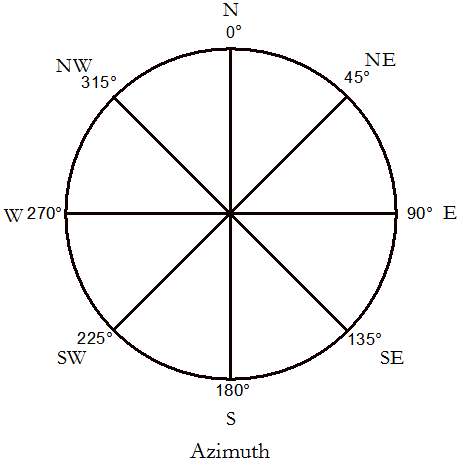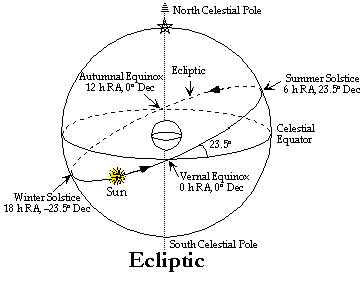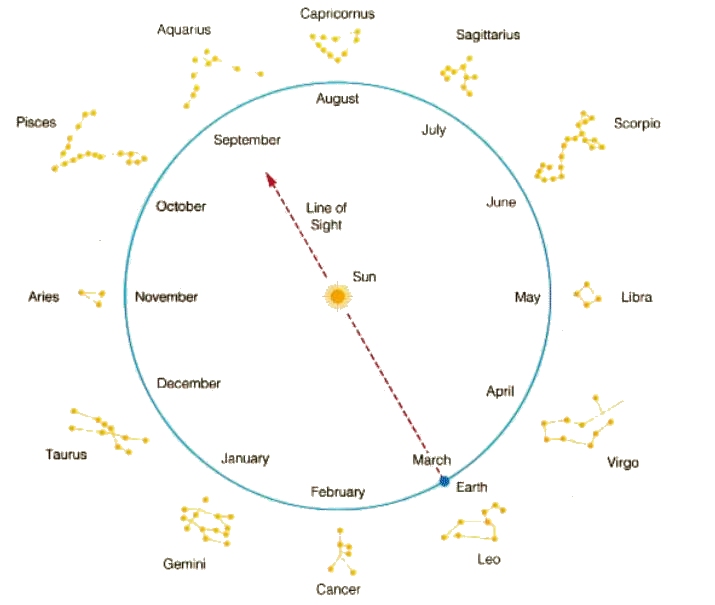In this brief activity you will explore the way the Sun moves in the sky at different times of year for observers in different locations on the Earth. You will do so using the simulators available at the Nebraska Astronomy Applet Project site on the Motions of the Sun page (http://astro.unl.edu/naap/motion3/motion3.html). To do so you must become familiar with a few simple concepts: azimuth, transit, the ecliptic, and the zodiac.

Azimuth
Azimuth is a way to specify the location of an object in the sky. It is related to Altitude, which you have already learned about. Altitude is how high an object is from the horizon in degrees. For example, the Zenith is 90° from every point on the horizon. Azimuth is the point on the horizon that you use as the starting point to measure Altitude. It is measured in degrees around the horizon starting with 0° at due North (True North, the direction toward the Earth’s rotational axis). It then moves around the circle of the horizon as follows: NNE (22.5°), NE (45°), ENE (67.5°), E (90°), ESE (112.5°), SE (135°), SSE (157.5°), S (180°), SSW (202.5°), SW (225°), WSW (247.5°), W (270°), WNW (292.5°), NW (315°), NNW (337.5°).
Azimuth is used to give the coordinates of an object in the sky (along with Altitude). Just like Altitude it depends on the observer’s location. Azimuth is also useful for defining the point on the horizon where the Sun rises and sets. This is how you will be using Azimuth in this activity.
Transit
To transit, in astronomy, is to cross the oberserver’s meridian. Remember, the meridian is the line the goes from due North (Az. 0°) to due South (Az. 180°) through the Zenith. For example, the traditional definition of noon is the moment that the Sun transits from the point of view of the observer. That is, the moment that the Sun crosses the meridian is called noon. The altitude of the Sun at the moment of transit is an important factor in determining the cause of the seasons on Earth.
Ecliptic
The Ecliptic is the path of the Sun through the sky as seen from the point of view of observers on Earth. Technically, the Ecliptic is the projection of the Earth’s orbit of the Sun on the sky.

In the Northern Hemisphere the beginning of each season can be thought of as follows. On the Vernal Equinox (the first day of Spring) the Sun crosses the Celestial Equator heading North. On the Summer Solstice (the first day of Summer) the Sun reaches its northernmost point, 23.5° north of the Celestial Equator. On the Autumnal Equinox (the first day of Autumn) the Sun crosses the Celestial Equator again on its way South. Finally, on the Winter Solstice (the first day of Winter) the Sun reaches its southernmost point, 23.5° south of the Celestial Equator.



